
How to Use SparkFun LCD TFT Breakout 1in8 128x160: Examples, Pinouts, and Specs
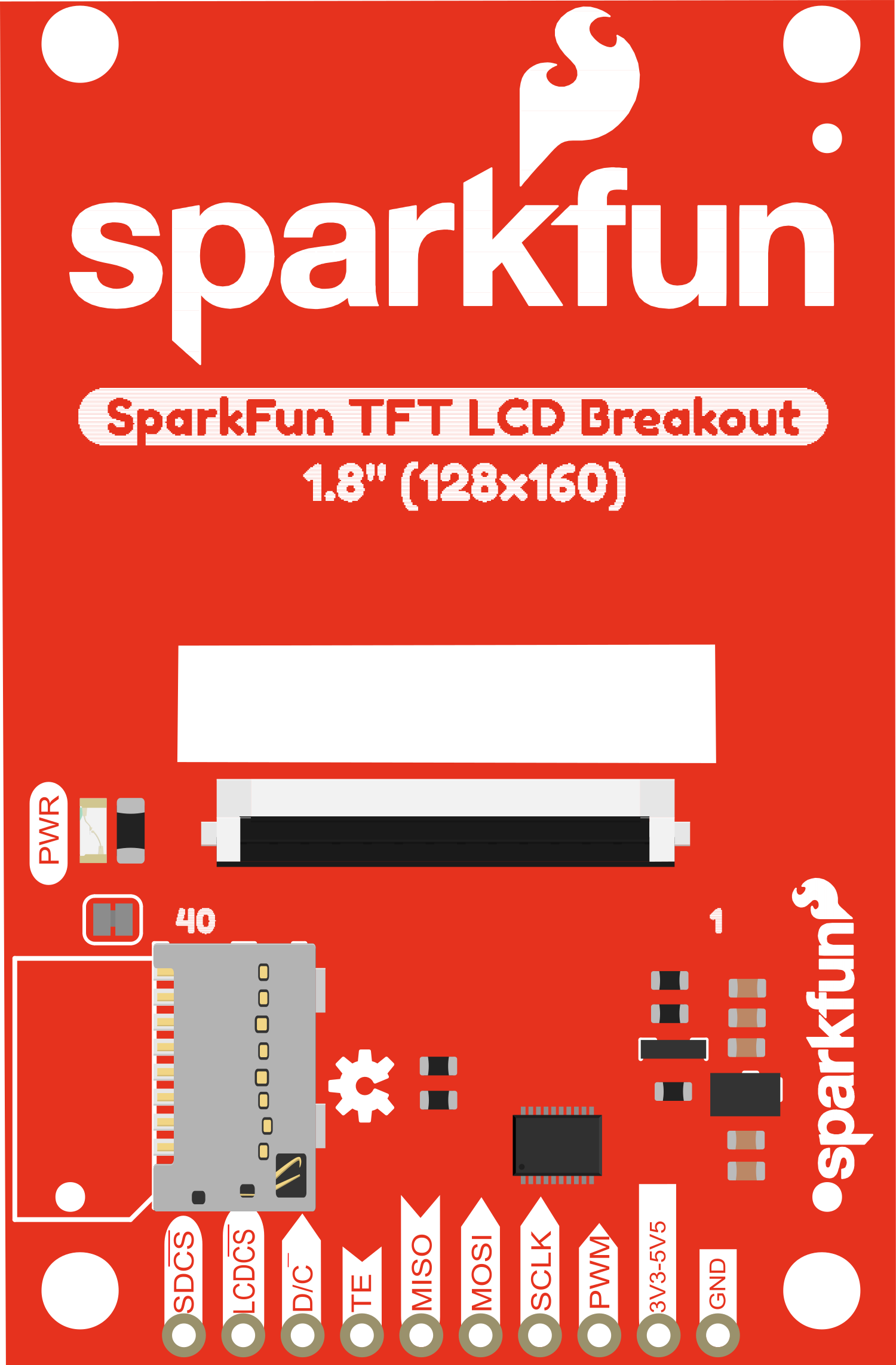
 Design with SparkFun LCD TFT Breakout 1in8 128x160 in Cirkit Designer
Design with SparkFun LCD TFT Breakout 1in8 128x160 in Cirkit DesignerIntroduction
The SparkFun LCD TFT Breakout 1in8 128x160 is a small, colorful display module perfect for embedding into electronics projects. With a 1-inch diagonal size and a resolution of 128x160 pixels, it provides a crisp and vibrant display for user interfaces, data visualization, and dynamic graphics. Common applications include handheld devices, IoT projects, and other compact systems requiring visual output.
Explore Projects Built with SparkFun LCD TFT Breakout 1in8 128x160
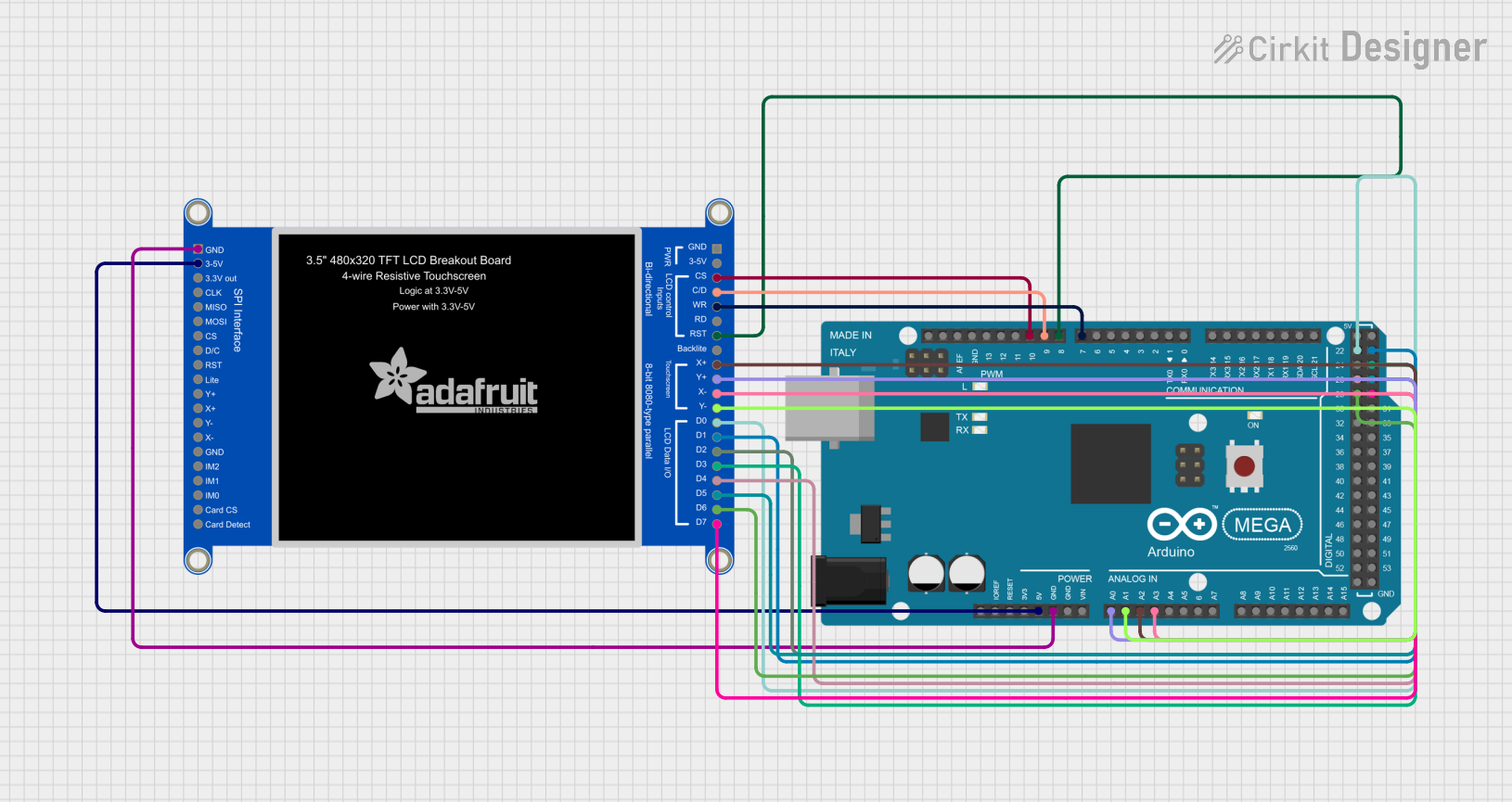
 Open Project in Cirkit Designer
Open Project in Cirkit Designer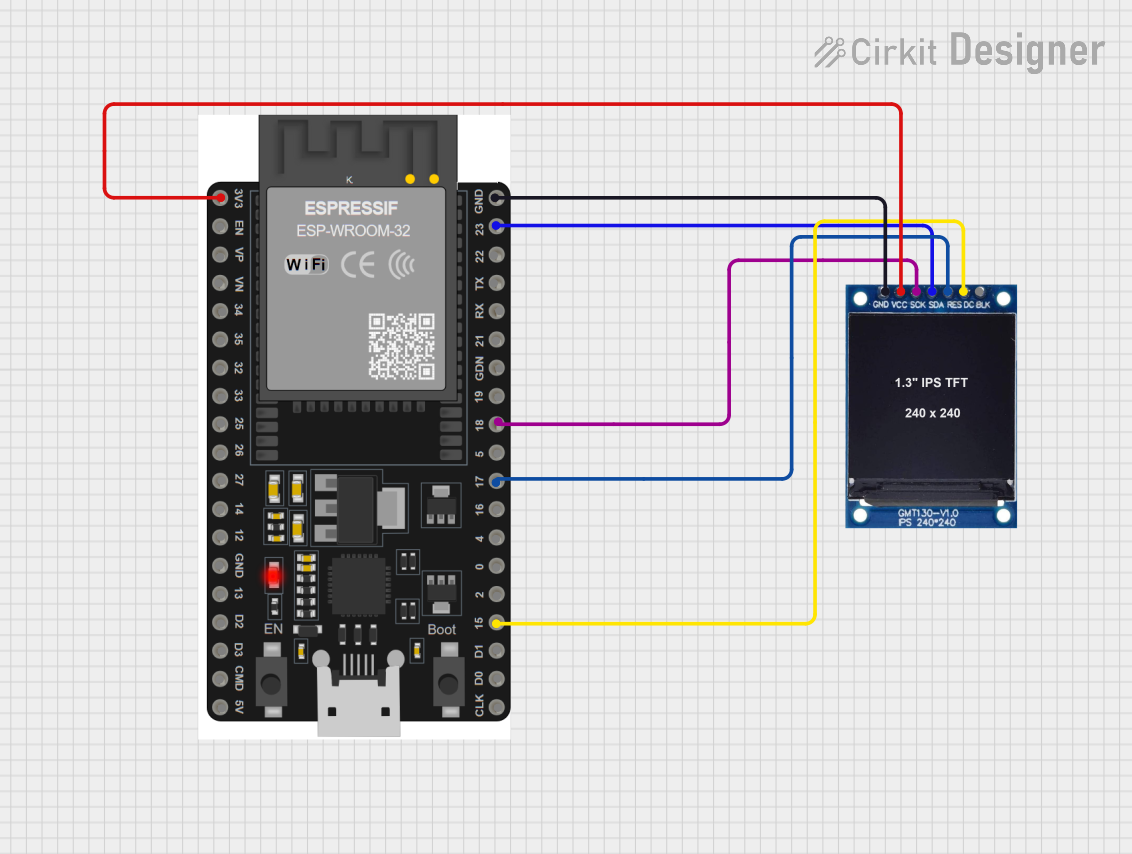
 Open Project in Cirkit Designer
Open Project in Cirkit Designer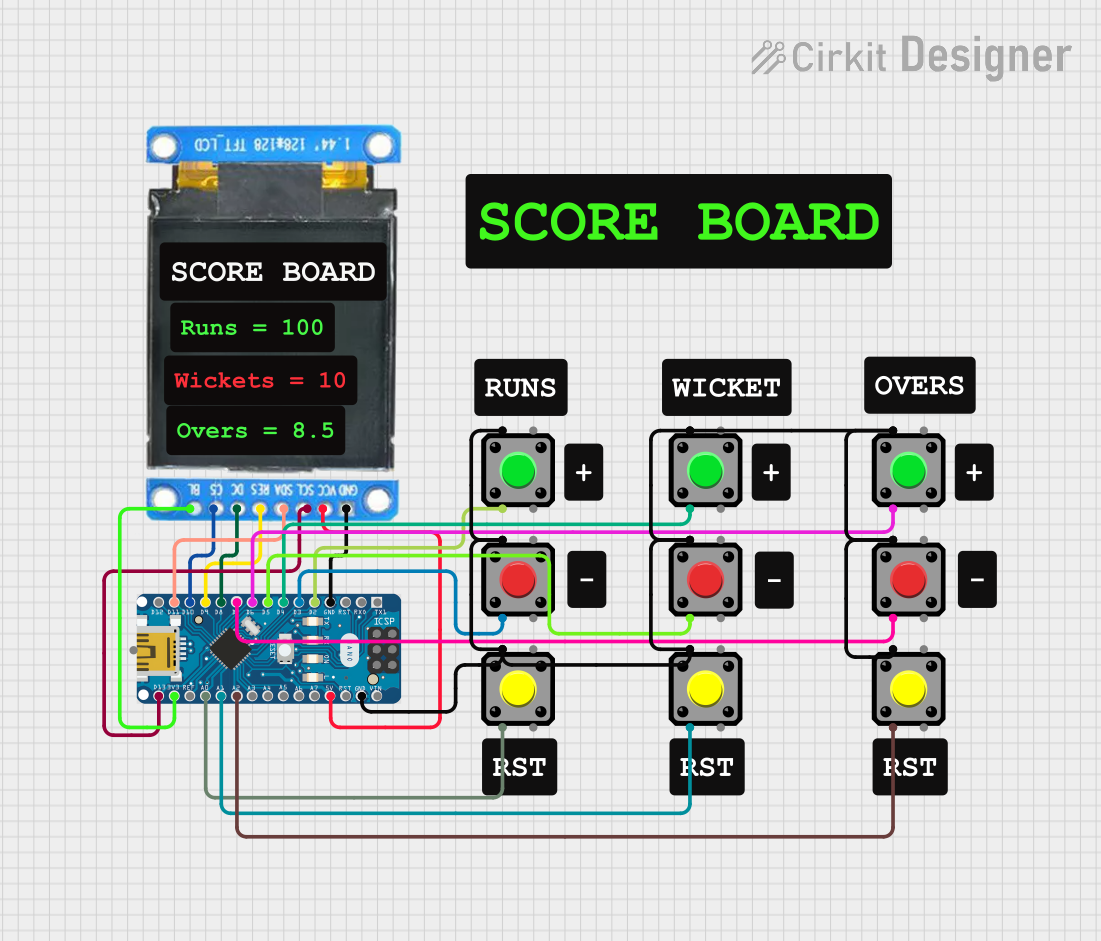
 Open Project in Cirkit Designer
Open Project in Cirkit Designer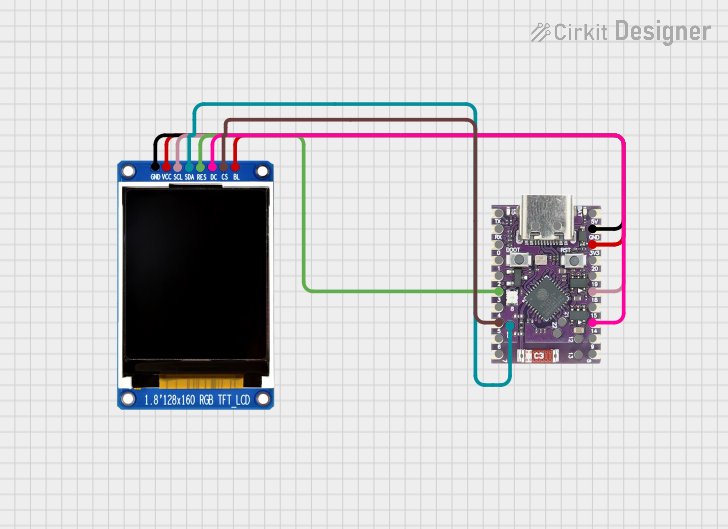
 Open Project in Cirkit Designer
Open Project in Cirkit DesignerExplore Projects Built with SparkFun LCD TFT Breakout 1in8 128x160

 Open Project in Cirkit Designer
Open Project in Cirkit Designer
 Open Project in Cirkit Designer
Open Project in Cirkit Designer
 Open Project in Cirkit Designer
Open Project in Cirkit Designer
 Open Project in Cirkit Designer
Open Project in Cirkit DesignerTechnical Specifications
Key Technical Details
- Display Type: TFT LCD
- Diagonal Size: 1 inch
- Resolution: 128x160 pixels
- Interface: SPI
- Operating Voltage: 3.3V - 5V
- Logic Level: 3.3V (5V tolerant)
- Backlight: LED
Pin Configuration and Descriptions
| Pin Number | Pin Name | Description |
|---|---|---|
| 1 | VCC | Power supply (3.3V - 5V) |
| 2 | GND | Ground |
| 3 | SCL | Serial Clock for SPI |
| 4 | SDA | Serial Data for SPI |
| 5 | RES | Reset pin |
| 6 | DC | Data/Command control pin |
| 7 | CS | Chip Select for SPI |
| 8 | BL | Backlight control (optional use) |
Usage Instructions
Integrating with a Circuit
To use the SparkFun LCD TFT Breakout in a circuit, follow these steps:
- Connect the VCC pin to a 3.3V or 5V power supply.
- Connect the GND pin to the ground of your power supply.
- Interface the SCL and SDA pins with the SPI clock and data lines of your microcontroller.
- Connect the RES pin to a digital output on your microcontroller for display resetting.
- Connect the DC pin to another digital output for toggling between data and command modes.
- Connect the CS pin to a digital output for SPI chip selection.
- Optionally, connect the BL pin to a PWM output for backlight brightness control.
Important Considerations and Best Practices
- Always ensure that the power supply is within the specified voltage range.
- Use a level shifter if your microcontroller operates at a different logic level than 3.3V.
- Avoid exposing the display to direct sunlight or high temperatures to prevent damage.
- When using PWM for backlight control, ensure that the frequency does not interfere with the display refresh rate.
Example Code for Arduino UNO
#include <SPI.h>
#include <Adafruit_GFX.h>
#include <Adafruit_ST7735.h>
// Pin definitions
#define TFT_CS 10
#define TFT_RST 9
#define TFT_DC 8
// Initialize Adafruit ST7735 library with hardware SPI module
Adafruit_ST7735 tft = Adafruit_ST7735(TFT_CS, TFT_DC, TFT_RST);
void setup() {
// Initialize display
tft.initR(INITR_BLACKTAB);
tft.fillScreen(ST7735_BLACK);
}
void loop() {
// Display a text string at coordinates (0, 0)
tft.setCursor(0, 0);
tft.setTextColor(ST7735_WHITE);
tft.setTextWrap(true);
tft.print("Hello, World!");
}
Ensure that the Adafruit GFX and ST7735 libraries are installed in your Arduino IDE before uploading this code to your Arduino UNO.
Troubleshooting and FAQs
Common Issues
- Display not powering on: Check the VCC and GND connections for proper voltage and secure connections.
- No image or incorrect colors: Verify that the SPI connections are correct and that the CS, DC, and RES pins are properly controlled by the microcontroller.
- Dim display: Ensure that the BL pin is connected and, if using PWM control, that it is set to an appropriate duty cycle.
Solutions and Tips for Troubleshooting
- Double-check all connections against the pin configuration table.
- Use example code to test the display functionality before integrating it into your project.
- If using an Arduino board with a different logic level, incorporate a level shifter for the data lines.
FAQs
Q: Can I use this display with a 5V microcontroller? A: Yes, the display is 5V tolerant, but it is recommended to use a level shifter for the data lines.
Q: How can I adjust the brightness of the backlight? A: Connect the BL pin to a PWM-capable pin on your microcontroller and adjust the duty cycle to change the brightness.
Q: What library should I use with this display? A: The Adafruit GFX and ST7735 libraries are recommended for use with this display.
Q: Can I display images on this screen? A: Yes, you can display images by converting them into a bitmap array and using the library's drawing functions.
For further assistance, consult the SparkFun community forums or contact technical support.